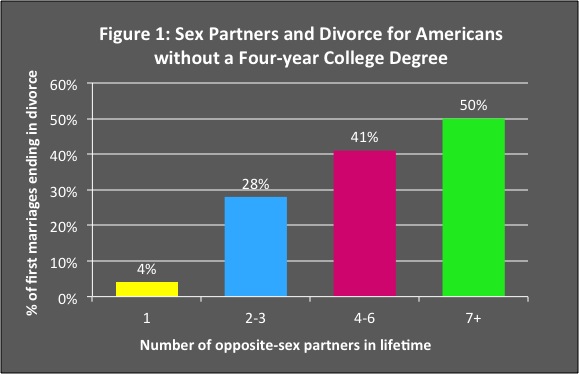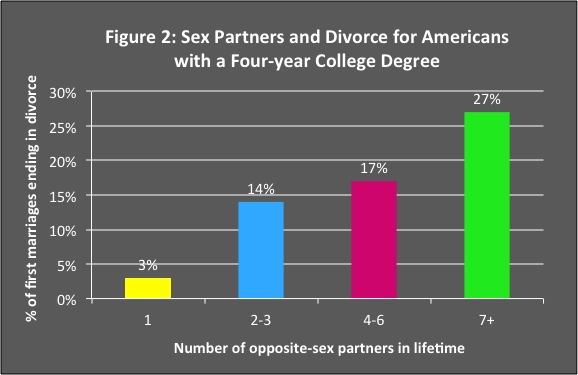Highlights
Are “liberal values the key to saving marriage?” asks economist Noah Smith. He argues, provocatively, that one of the problems with working-class family life is that it is not liberal enough. Working-class men and women are too attached to outdated norms regarding gender, sex, and family life to forge strong and stable families for the twenty-first century, by his account. Jessica Goldstein, Richard Reeves, and Justin Wolfers have made similar arguments about the counterproductive character of cultural conservatism for today’s families.
Are they right? We think they are on to something when it comes to some gender attitudes and behaviors. For instance, research indicates that couples are happier when they share the housework. But when it comes to sex, the “liberal marriage hypothesis” seems weaker. Specifically, an ethic of sexual restraint still seems to have some worth today—for both the working class and their better-educated fellow citizens.
To wit: having fewer sexual partners is associated with increased odds of enjoying a high-quality, stable marriage. A recent National Marriage Project report, “Before I Do,” found that having fewer sexual partners is linked to increased odds of greater marital quality (a finding covered by Catherine Rampell in the Washington Post here). And our new analysis of the National Survey of Family Growth (2006–2010) indicates that a history of fewer sexual partners is linked to lower odds of separation or divorce.

Notes: Ever-married men and women aged 17-45. Data from the National Survey of Family Growth (2006–2010). N = 6,732.
Among Americans without a four-year college degree, the odds of divorce spike dramatically for people with more than one opposite-sex partner during their lifetime (we don’t have data on same-sex partners). Only 4 percent of survey respondents with one partner have separated or dissolved their first marriage. But that shoots up to 28 percent for people with two or three partners, then to 41 percent among those with four to six partners, and finally to 50 percent for people who’ve had seven or more sex partners during their lifetime.

Notes: Ever-married men and women aged 17-45. Data from the National Survey of Family Growth (2006–2010). N = 2,537.
The increases are not quite as dramatic among people with four-year college degrees, but are still remarkable. Three percent of these Americans end up divorced from their first marital partner if they’ve had only one sex partner. That increases to 14 percent if they’ve had two or three sex partners, 17 percent given four to six sex partners, and 27 percent for people with seven or more opposite-sex partners.
What can we conclude from these data? Most important, multiple sex partners seem to increase the chances of divorce for working class and college-educated Americans alike. (Note here that the association between sex partners and divorce is robust even after controlling for race, ethnicity, age at first marriage, and family structure of origin). It’s also noteworthy that education, normally a strong predictor of marital stability, doesn’t matter much for people who’ve married their first sex partner. College-educated and non-college-educated Americans in this group have almost identically low divorce rates. Finally, the relationship between multiple sexual partners and divorce is weaker but still significant for educated Americans.
Undoubtedly, part of the story about sex partners and marital stability is about selection—the kinds of people who have fewer sex partners may also be the kinds of people who end up in stable marriages. They may be more religious, or more risk-averse, or something else. But what’s clear from the data is this: a cautious approach to sex and romance portends a more stable married life, for both working-class and college-educated Americans.
The bottom line is that more progressive patterns of dividing domestic work and more traditional patterns of dating may both add value to contemporary married life. Contra Smith, then, Ross Douthat appears to be right in arguing, in the New York Times, that “a complex synthesis of new and old” approaches to marriage and family life is what fosters strong marriages in 2014.
Update: Upon seeing this piece, Noah Smith wonders if divorce is driving the number of lifetime sexual partners, not vice versa. This is certainly also part of the story. But at least two other studies (here and here) show that multiple partners prior to marriage are linked to higher risks of later divorce. These studies also show the multiple-partner factor is robust to the inclusion of controls for religious factors.











